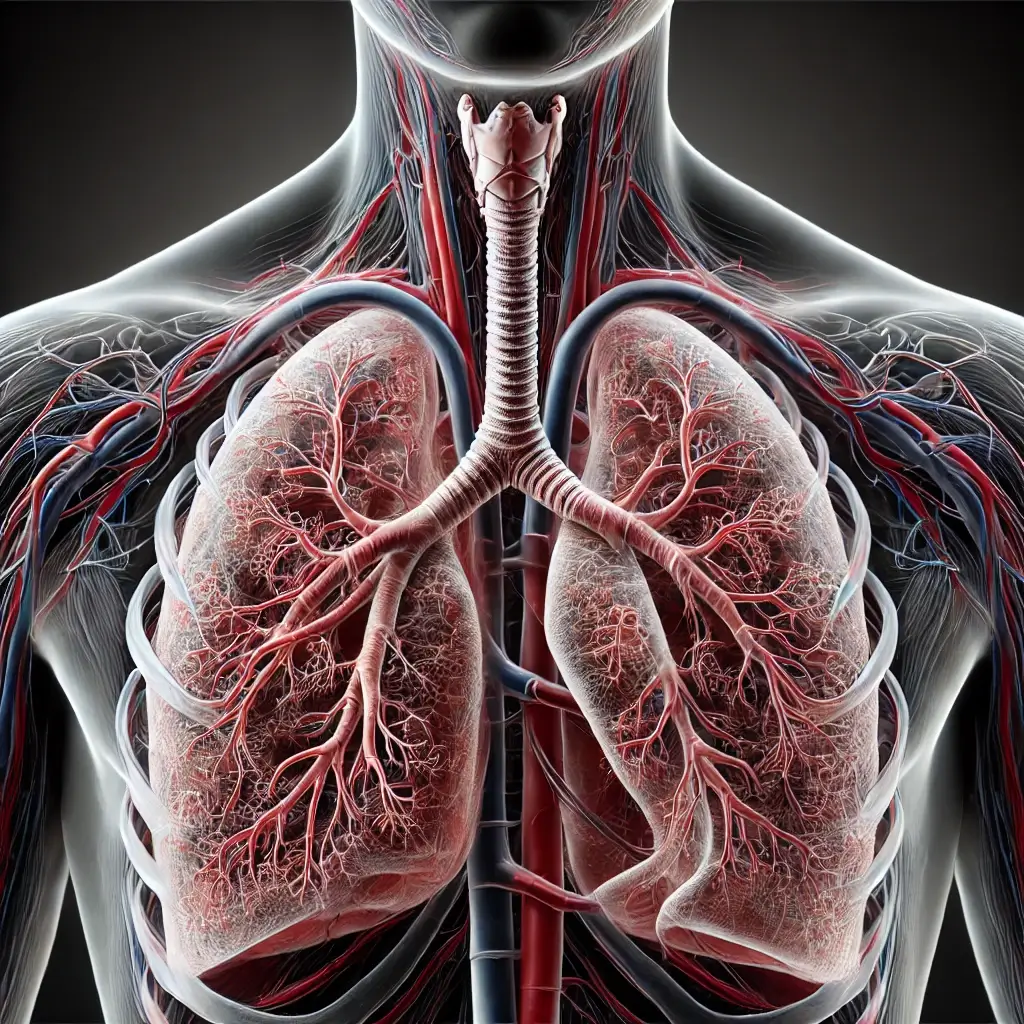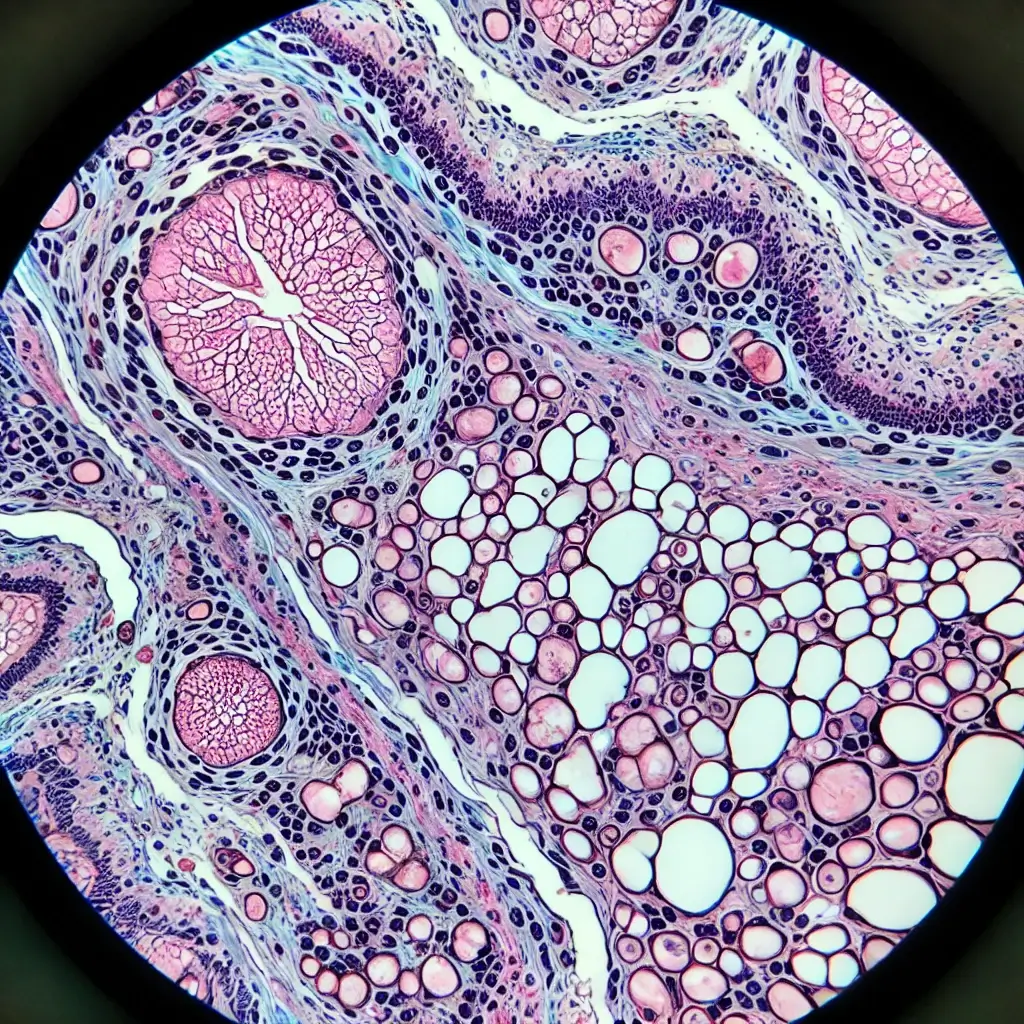Book Appointment Now
Understanding Lung Carcinoid Tumor

Lung Carcinoid Tumor Guide
Introduction
Introduction
Lung carcinoid tumors are a rare type of lung cancer that arises from neuroendocrine cells, which are part of the body’s hormonal and nervous systems. These tumors grow slowly and are less likely to spread than other forms of lung cancer. Lung carcinoid tumors are broadly categorized into typical and atypical carcinoids, with the former being more common and less aggressive. Early diagnosis and treatment often lead to favorable outcomes, making awareness of symptoms and risk factors crucial.
Statistics
Lung carcinoid tumors account for 1-2% of all lung cancers. They are more commonly diagnosed in individuals aged 40 to 60, although they can occur at any age. The five-year survival rate is approximately 85-90% for localized typical carcinoids and 50-60% for atypical carcinoids, highlighting the importance of early detection.
Medical Illustrations
Histological section of a lung carcinoid tumor under a microscope:

CT scan of human lungs with a small carcinoid tumor:

Risk Factors and Prevention
a. Known Risk Factors
The exact cause of lung carcinoid tumors is unknown, but certain factors may increase the risk:
- Genetic Syndromes: Conditions such as multiple endocrine neoplasia type 1 (MEN1) are associated with a higher risk.
- Family History: A family history of neuroendocrine tumors may increase susceptibility.
- Smoking: While not as strongly linked to lung carcinoids as to other lung cancers, smoking may play a role.
- Environmental Exposure: Prolonged exposure to industrial chemicals or pollutants may contribute to risk.
b. Prevention
- Avoid smoking and exposure to secondhand smoke.
- Use protective measures in workplaces with hazardous chemicals.
- Seek genetic counseling if you have a family history of MEN1 or similar conditions.
Screening
Symptoms and Early Warning Signs
Symptoms of lung carcinoid tumors vary depending on the tumor’s location and size. Common signs include:
- Persistent cough, sometimes with blood (hemoptysis)
- Shortness of breath or wheezing
- Chest pain
- Frequent respiratory infections
- Facial flushing or redness (in rare cases)
- Diarrhea or abdominal pain (related to hormone secretion)
Because these symptoms overlap with other respiratory conditions, timely medical evaluation is essential.
Diagnosis
Diagnosing lung carcinoid tumors involves several steps to confirm the presence and extent of the disease:
- Physical Examination: The doctor will assess symptoms and medical history.
- Imaging Tests: Chest X-rays, CT scans and MRIs provide detailed views of the lungs.
- Bronchoscopy: A thin, flexible tube with a camera is used to examine the airways and collect tissue samples.
- Biopsy: Confirms the diagnosis by analyzing tumor cells.
- Blood and Urine Tests: Detect hormones secreted by the tumor.
- Octreotide Scan: A nuclear imaging test that identifies carcinoid tumors using a radioactive tracer.
Types of Lung Carcinoid Tumors
- Typical Carcinoids: Slow-growing and less likely to spread.
- Atypical Carcinoids: Faster-growing, with a slightly higher risk of spreading to other organs.
Stages
Types of Treatment
Overview of Treatment Modalities
The treatment plan depends on the tumor’s type, size, location and whether it has spread. Common treatments include:
- Surgery:
- Lobectomy: Removes the affected lobe of the lung.
- Sleeve Resection: Removes the tumor while preserving lung function.
- Pneumonectomy: Removes an entire lung in advanced cases.
- Radiation Therapy: Used for inoperable tumors or to target residual cancer cells post-surgery.
- Chemotherapy: Administered for advanced or metastatic tumors, though less effective for typical carcinoids.
- Targeted Therapy: Focuses on specific molecules involved in tumor growth.
- Somatostatin Analogs: Medications like octreotide help manage symptoms caused by hormone secretion.
- Clinical Trials: Experimental therapies may be available for atypical or advanced cases.
Comparing Treatments
| Treatment | Mechanism | Side Effects | Efficacy (Survival Rate) | Study/Trial |
|---|---|---|---|---|
| Surgery | Removes tumor | Pain, infection | 85-90% for localized typical carcinoids | Smith et al., 2022 |
| Radiation Therapy | Shrinks or eliminates tumors | Fatigue, skin burns | Effective for inoperable cases | Lee et al., 2020 |
| Chemotherapy | Inhibits cell division | Nausea, fatigue | Moderate for atypical carcinoids | Carter et al., 2021 |
| Somatostatin Analogs | Controls hormone secretion | Diarrhea, abdominal pain | Improves quality of life | Brown et al., 2023 |
Living with Lung Carcinoid Tumor
Managing life with a lung carcinoid tumor involves addressing physical, emotional and practical challenges:
- Symptom Management: Medications like somatostatin analogs help control hormone-related symptoms.
- Regular Monitoring: Ongoing imaging and blood tests detect recurrence or progression.
- Nutritional Support: Work with a dietitian to manage symptoms like diarrhea or weight loss.
- Emotional Support: Counseling or support groups can help patients and families cope with the diagnosis.
- Rehabilitation: Physical therapy aids recovery after surgery.
Additional Resources
Key Takeaways
- Lung carcinoid tumors are rare, slow-growing cancers that can often be effectively treated.
- Symptoms include persistent cough, chest pain and shortness of breath, requiring timely medical evaluation.
- Treatment options range from surgery to symptom management with medications like somatostatin analogs.
- Comprehensive care, including emotional and physical support, is essential for managing the disease and improving quality of life.
Final Recommendations
- Seek medical attention for persistent respiratory symptoms.
- Avoid smoking and reduce exposure to environmental toxins.
- Discuss treatment options with a multidisciplinary team to tailor care to your needs.
- Engage in follow-up care and monitoring to ensure long-term health.
Disclaimer
The information provided in this article is intended for general informational purposes only and should not be construed as medical advice. While every effort has been made to ensure the accuracy of the information presented, it is not a substitute for professional medical guidance, diagnosis, or treatment. Always consult a qualified healthcare provider with any questions you may have regarding a medical condition, including Lung Carcinoid Tumor. Do not disregard or delay seeking professional medical advice based on information found in this article. The authors and publishers are not responsible for any consequences resulting from the use of the information provided.
